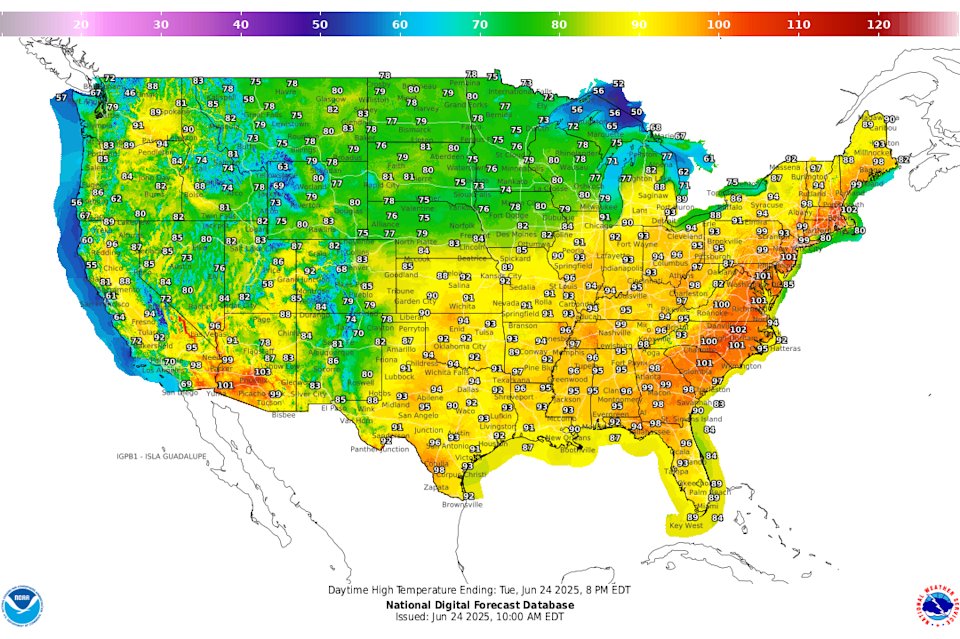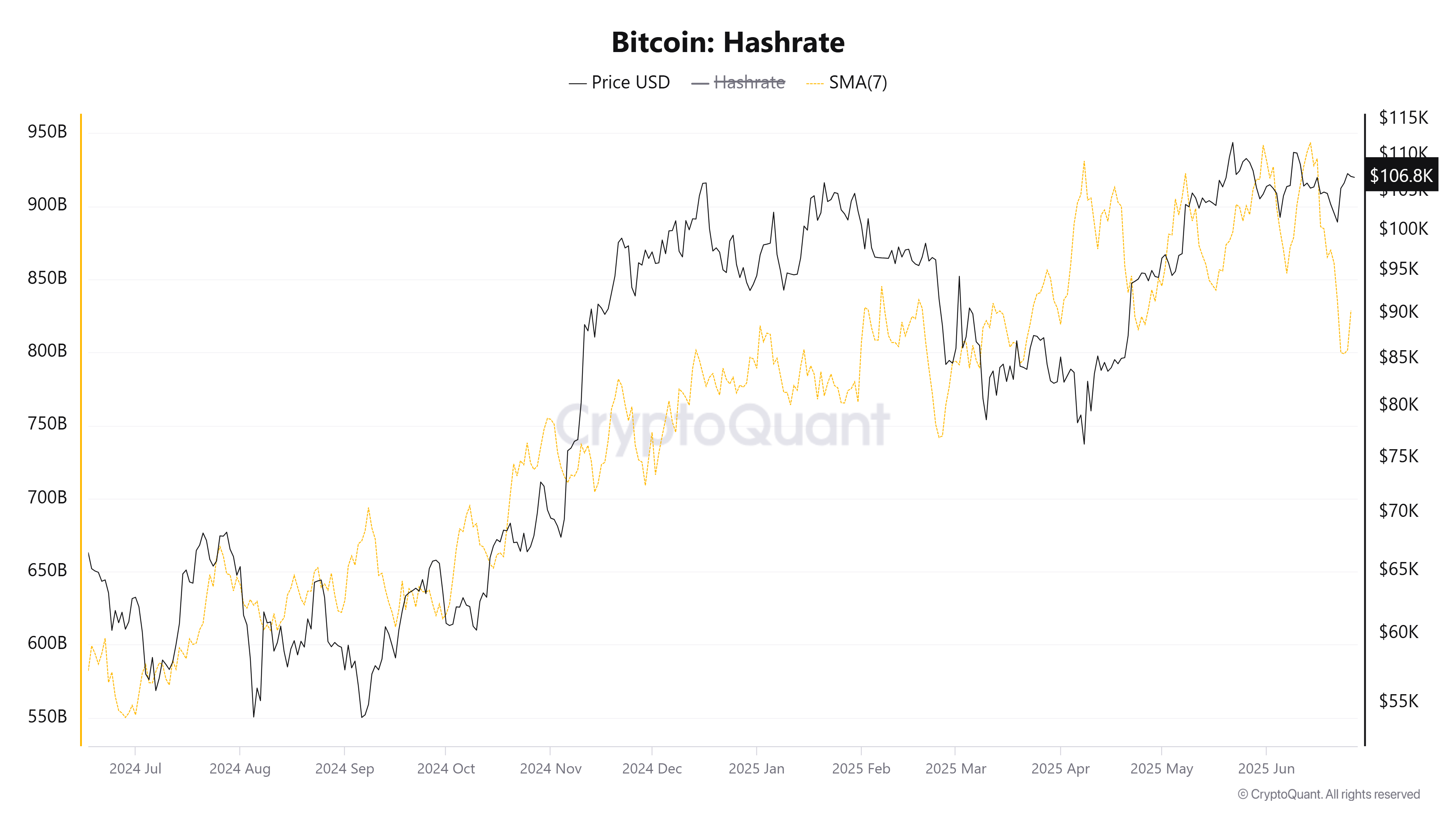In June, Bitcoin’s hashrate suddenly plunged to its lowest level in over a year. The decline came amid heightened political tensions between the US and Iran, prompting speculation about a potential geopolitical connection.
However, experts remain divided. What are the arguments on both sides of the debate? Here’s a deeper look.
Bitcoin Hashrate Plunges After ATH – Is Iran the Culprit?
Hashrate, a key metric measuring the computational power securing the Bitcoin network, indicates the scale and health of mining activity.
A high hashrate means more miners participate, making the network more secure. When the figure drops, it typically suggests that many miners have paused operations for some reason.
According to CryptoQuant, the 7-day average Bitcoin hashrate dropped to 800 EH/s — its lowest level since March 2025.
This sharp decline occurred between June 14 and 24, coinciding with rising military tensions involving Israel, the US, and Iran.
Nic, founder of CoinBureau, proposed a provocative theory. He suggested Iran may have converted oil into Bitcoin to bypass sanctions and fund state spending.
In a post on X, Nic estimated that about 3.1% of the global Bitcoin hashrate could be coming from Iran.
He argued that the drop in hashrate following US airstrikes might not be coincidental. Bitcoin mining facilities operated by Iran’s Islamic Revolutionary Guard Corps (IRGC) could have been targeted.
This theory is supported by blockchain analytics firm Elliptic, which has reported that Iran uses Bitcoin mining as a financial tool to withstand international sanctions.
Mike Alfred, another analyst, went further. He claimed that Iran is not only evading sanctions with Bitcoin, but also selling BTC obtained through cyberattacks to buy missiles and upgrade its uranium enrichment infrastructure.
“We might have entered an era where countries are bombing each other’s Bitcoin mining facilities as part of the global hash war I predicted in 2017,” Max Keiser told BeInCrypto.
Could the US Be the Real Cause?
Rob Warren, author of The Bitcoin Miner’s Almanac, offered a different view. He suggested the drop may be rooted in domestic conditions in the US, not geopolitical conflict.
Instead of blaming airstrikes in Iran, Warren pointed to extreme heat in the US as a more likely factor.

“It’s impossible to know at any given moment how many miners are operating. Block time is the only proxy we have for existent hashrate. My guess is curtailment due to the US heat dome, combined with many other unknowns. I don’t think Iran is a single cause,” Warren said.
Tech investor Daniel Batten agreed and applied Occam’s Razor — the idea that the simplest explanation is usually correct.
He noted that record-high temperatures in Texas drove up electricity demand on the ERCOT power grid, forcing miners to scale down operations to prevent overload.
Data from the US Energy Information Administration (EIA) shows electricity usage in Texas has surged, partly due to the growth of data centers and mining facilities. Natural gas-powered electricity generation is projected to increase by 8% in 2025.
The crypto community watches closely for definitive answers as geopolitical instability and climate-related disruptions rise. Regardless of the cause, this hashrate drop will likely have long-term implications for Bitcoin’s price and mining strategies.
The post Experts Debate Why Bitcoin Hashrate Plummeted in June appeared first on BeInCrypto.


 Domestic model: Burn oil/gas to power rigs…
Domestic model: Burn oil/gas to power rigs…